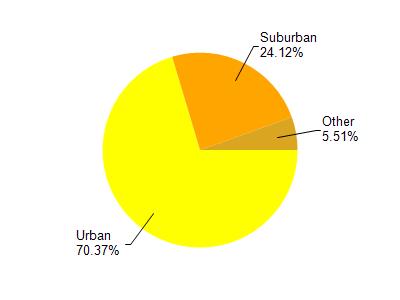Milwaukee
No
No
No
Fish and Aquatic Life
Overview
Wilson Park Pond is a small landlocked lake constructed in 1933, part of a 78.5- acre county park. The major water source is the metropolitan water system (from Lake Michigan) as reflected in water quality. The pond is generally turbid, however, much of the bottom is gravel. Bluegills, bullheads and carp provided limited fishing subject to winterkill. This is a duck and swan sanctuary. An island affords refuge for waterfowl and adds to the aesthetic qualities of the lake. Boats may be rented, there is bait casting from a dock, and in water, the lake surface is maintained for ice skating.
Source: 1964, Surface Water Resources of Milwaukee County Wilson Park Pond, T6N, R22E, Section 19 Surface Acres = 7.2, S.D.F. = 1.60, Maximum Depth = 5.3 feet
Date 1964
Author Aquatic Biologist
Condition
Wisconsin has over 84,000 miles of streams, 15,000 lakes and milllions of acres of wetlands. Assessing the condition of this vast amount of water is challenging. The state's water monitoring program uses a media-based, cross-program approach to analyze water condition. An updated monitoring strategy (2015-2020) is now available. Compliance with Clean Water Act fishable, swimmable standards are located in the Executive Summary of Water Condition in 2018. See also the 'monitoring and projects' tab.
Reports
Recommendations
Monitor Water Quality or Sediment
During the summer of 2012, the U.S. Environmental Protection Agency (EPA), states, tribes and other partners will conduct the second nationwide survey of the condition of the nation’s lakes. The National Lakes Assessment (NLA) will help citizens and governments measure the health of our waters, take actions to prevent pollution, and evaluate the effectiveness of protection and restoration efforts. The NLA 2012 is one in a series of national surveys of the condition of the nation’s waters (see www.epa.gov/aquaticsurveys). Designed to estimate the percentage of lakes that are in good, fair, or poor condition, the survey will serve as a scientific report card on America’s lakes. It will examine ecological, water quality, and recreational indicators, and assess how widespread key stressors (such as nitrogen, phosphorus, and acidification) are across the country. The survey is a collaborative effort that involves dozens of state environmental and natural resource agencies, federal agencies, universities and other organizations. In most states, state water quality staff will conduct the water quality sampling and habitat assessments.
Management Goals
Wisconsin's Water Quality Standards provide qualitative and quantitative goals for waters that are protective of Fishable, Swimmable conditions [Learn more]. Waters that do not meet water quality standards are considered impaired and restoration actions are planned and carried out until the water is once again fishable and swimmable
Management goals can include creation or implementation of a Total Maximum Daily Load analysis, a Nine Key Element Plan, or other restoration work, education and outreach and more. If specific recommendations exist for this water, they will be displayed below online.
Monitoring
Monitoring the condition of a river, stream, or lake includes gathering physical, chemical, biological, and habitat data. Comprehensive studies often gather all these parameters in great detail, while lighter assessment events will involve sampling physical, chemical and biological data such as macroinvertebrates. Aquatic macroinvertebrates and fish communities integrate watershed or catchment condition, providing great insight into overall ecosystem health. Chemical and habitat parameters tell researchers more about human induced problems including contaminated runoff, point source dischargers, or habitat issues that foster or limit the potential of aquatic communities to thrive in a given area. Wisconsin's Water Monitoring Strategy was recenty updated.
Grants and Management Projects
Monitoring Projects
| WBIC | Official Waterbody Name | Station ID | Station Name | Earliest Fieldwork Date | Latest Fieldwork Date | View Station | View Data |
|---|
| 15500 | Wilson Park Pond | 10037721 | Wilson Park Pond nearshore | 8/9/2012 | 8/9/2012 | Map | Data |
| 15500 | Wilson Park Pond | 10004039 | Wilson Park Pond | 7/9/2001 | 7/13/2022 | Map | Data |
| 15500 | Wilson Park Pond | 10041108 | Wilson Park Lagoon South Bank | 9/9/2004 | 9/9/2004 | Map | Data |
| 15500 | Wilson Park Pond | 10041107 | Wilson Park Lagoon North Bank | 9/9/2004 | 9/9/2004 | Map | Data |
| 15500 | Wilson Park Pond | 10040123 | Milwaukee Co. Parks - Wilson Park | 7/5/2013 | 8/23/2013 | Map | Data |
| 15500 | Wilson Park Pond | 413813 | Wilson Park Pond - Wilson Park Cr at 6th Street | 10/9/1997 | 8/9/2012 | Map | Data |
| 15500 | Wilson Park Pond | 10041110 | Wilson Park Lagoon West Bank | 9/17/2003 | 8/31/2004 | Map | Data |
|

Watershed Characteristics
Wilson Park Pond is located in the Kinnickinnic River watershed which is 33.35 mi². Land use in the watershed is primarily urban (70.30%), suburban (24.10%) and a mix of forest (2.80%) and other uses (2.70%). This watershed has 26.80 stream miles, 4,950.14 lake acres and 68.30 wetland acres.
Nonpoint Source Characteristics
This watershed is ranked High for runoff impacts on streams, High for runoff impacts on lakes and High for runoff impacts on groundwater and therefore has an overall rank of High. This value can be used in ranking the watershed or individual waterbodies for grant funding under state and county programs.However, all waters are affected by diffuse pollutant sources regardless of initial water quality. Applications for specific runoff projects under state or county grant programs may be pursued. For more information, go to surface water program grants.